The Theorectica BACCH 4Mac Pro
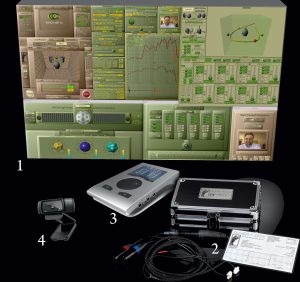
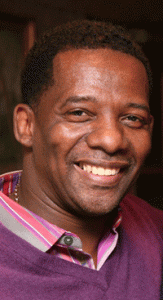 The Theorectica BACCH 4Mac Purifier is the easiest review I’ve had to write, thanks to my continued adoration for it. My reason is simple: I’ve never encountered a product that has had as profound an impact on my music collection or listening experience as the Theorectica BACCH 4Mac (hereinafter referred to as BACCH 4Mac). Unfortunately, I admittedly dismissed the BACCH technology without ever having heard of it. I recall that about three years ago, my friend Dan Secula discussed the BACCH with great enthusiasm during a listening session at his home. I quickly dismissed the BACCH, recognizing it as nothing more than a fancy digital room enhancer better suited for a multi-channel, home theater environment.
The Theorectica BACCH 4Mac Purifier is the easiest review I’ve had to write, thanks to my continued adoration for it. My reason is simple: I’ve never encountered a product that has had as profound an impact on my music collection or listening experience as the Theorectica BACCH 4Mac (hereinafter referred to as BACCH 4Mac). Unfortunately, I admittedly dismissed the BACCH technology without ever having heard of it. I recall that about three years ago, my friend Dan Secula discussed the BACCH with great enthusiasm during a listening session at his home. I quickly dismissed the BACCH, recognizing it as nothing more than a fancy digital room enhancer better suited for a multi-channel, home theater environment.
This knee-jerk reaction stemmed from my 25-plus years of experience with exotic, digitally based processors, which proved more frustrating than fanciful after an extensive love affair. Room correction and sophisticated digital EQs, as seen in products from brands like Tact Audio, Lyndorf Audio, and Z-Systems, have graced my listening space since 1995. My current stalwart (20 years and counting), Behold Audio’s ingenious series of electronics, makes it nearly impossible to part ways even though I’ve turned off its room correction software for more than ten years. My reasoning is simple. Once you give me this many knobs, buttons, and switches, inevitably, something always goes awry. The saddest revelation I had was when I finally turned off the room correction, and the sound improved dramatically. I had obviously gone too far without noticing. Hence, I never went back.
But even before these components began to grace my listening space, there was the Ambiophonics inventor Ralph Glasgal, the first cross-talk cancellation-based DSP software to hit the market. In fact, I was always a welcome guest at Glasgal’s home in northern NJ to hear about his latest upgrades. At the time, Glasgal was championing the Tact Audio brand and had the most outrageous high-end audio system I’d ever seen. If I recall correctly, Glasgal’s listening room still consists of ten pairs of Soundlabs Majestics electrostatic loudspeakers and another ten Tact Audio processors and amplifiers. The two front loudspeakers were about three feet apart. They were separated by a large partition designed to lower crosstalk (years later, more sophisticated software allowed for the removal of this partition). How it all came together remains a mystery. I must admit, I always enjoyed being in this man’s company, even when I couldn’t always understand what his system was trying to accomplish sonically (Ralph was a contributor to these pages and penned his theory on Ambiophonics here).
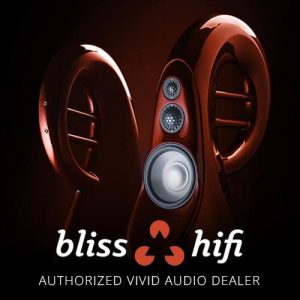 Without going into further detail, you probably get the idea of why I dismissed the BACCH without even hearing it. However, I’ll be the first to admit that contempt prior to investigation is dangerous. A brief online search for the BACCH led me to David Chesky, who champions the BACCH technology and whom I hold in high regard. David Chesky had been involved with Glasgal’s Ambiophonics in the past, while developing his Binaural microphones for his excellently recorded Chesky records label. Today, Chesky Records offers Binaural+ recordings, designed to unleash the full power of the BACCH technology into your listening room. In my discussions with Dr. Chesky, he strongly recommended that I give the BACCH a listen. I began discussions with my friend Dan Secula once again, and we both agreed to start with the BACCH 4Mac Audiophile version ($9k), designed for computer-literate types, which is the subject of this review. There is also the $30k BACCCH-SP and ADIO analogue model available. Oh, the BACCH (in any version) comes with a 90-day, 100% money-back guarantee if you’re not satisfied.
Without going into further detail, you probably get the idea of why I dismissed the BACCH without even hearing it. However, I’ll be the first to admit that contempt prior to investigation is dangerous. A brief online search for the BACCH led me to David Chesky, who champions the BACCH technology and whom I hold in high regard. David Chesky had been involved with Glasgal’s Ambiophonics in the past, while developing his Binaural microphones for his excellently recorded Chesky records label. Today, Chesky Records offers Binaural+ recordings, designed to unleash the full power of the BACCH technology into your listening room. In my discussions with Dr. Chesky, he strongly recommended that I give the BACCH a listen. I began discussions with my friend Dan Secula once again, and we both agreed to start with the BACCH 4Mac Audiophile version ($9k), designed for computer-literate types, which is the subject of this review. There is also the $30k BACCCH-SP and ADIO analogue model available. Oh, the BACCH (in any version) comes with a 90-day, 100% money-back guarantee if you’re not satisfied.
The next thing I did was get in touch with BACCH designer, Professor Edgar Choueiri, who is the President of Theoretica Applied Physics and currently resides as Director of Princeton University’s 3D Audio and Applied Acoustics Lab. The first thing Professor Choueiri did was invite both Dan and me to his Princeton University rocket propulsion lab. We decided to go during the summer (2024) since most students would be on summer break.
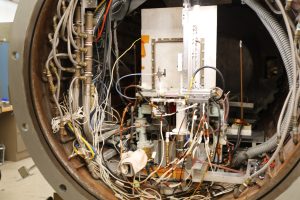
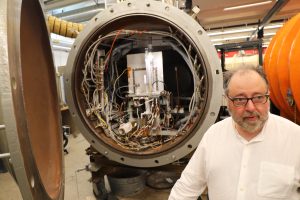
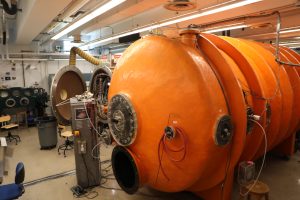
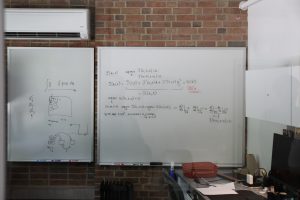
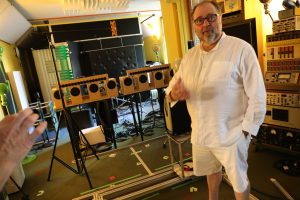
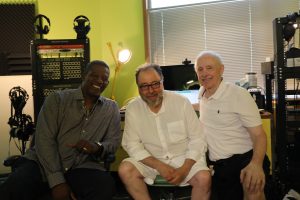
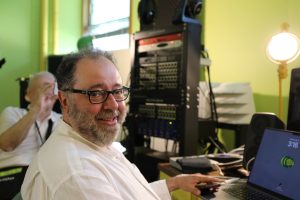
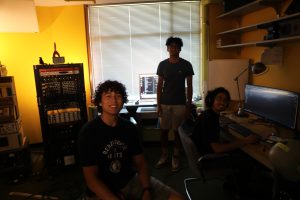
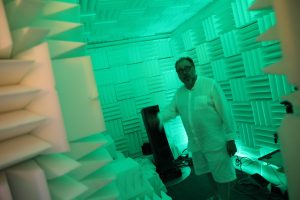
Perusing the Internet, here’s one of the better descriptors for the BACCH’s purpose and importance: “His research team at Princeton University has studied how to retrieve fully the three-dimensional spatial information locked within stereo recordings. The way to retrieve this information, the professor claims, is to eliminate the crosstalk that occurs during playback of stereo recordings. Some crosstalk between channels results from the use of stereo miking techniques; this type of crosstalk is desirable for stereo imaging. But unlike crosstalk that results from using stereo miking, the crosstalk that occurs during playback over stereo speakers is additive. That is, when the sound from your right speaker reaches your left ear and vice versa, you’re hearing something that wasn’t on the recording. The BACCH-SP uses processing of extraordinary sophistication to eliminate the additive crosstalk that occurs during playback. As we all know, however, sophistication doesn’t entail effectiveness, so I’ve been curious about whether the system works.”
Professor Choueiri and his staff greeted Dan and me with the utmost respect. Professor Choueiri showed us around his rocket propulsion lab, which was conveniently located adjacent to his 3D Audio and Applied Acoustics Lab. Have you ever seen rocket ship thrusters up close? One look, and you immediately realize that audio is truly a hobby for Professor Choueiri.
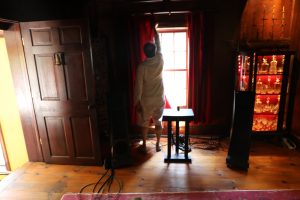
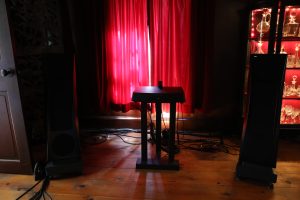
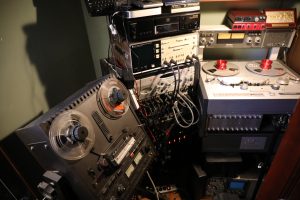
After the one-hour tour, Professor Choueiri invited us to his nearby home to hear the BACCH in a real home environment. The system, composed of a BACCH SP audio and Jansen Valentina self-powered loudspeakers, sounded quite good and really showed what the BACCH technology can do, especially with Binaural recordings. Of course, Dan and I were excited to hear these recordings, but not nearly as excited to get back home to install our newly purchased BACCH 4Macs in our own systems.
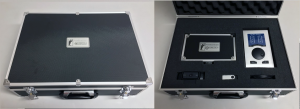
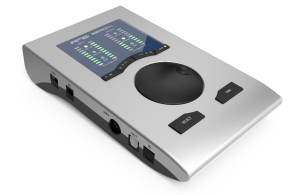
The BACCH 4Mac Pro is composed of a Mac Mini (model M2), accompanied by BACCH 3D installed software. The RME Baby Face Pro DAC comes with the Mac Mini and serves as the interface between the BACCH 4Mac Pro and your audio system. The BACCH 4Mac Pro is the most expensive of the four versions available. Mine retails at $ 6,950 (not including optional room correction software (ORC) at $1,000, plus a fully loaded Mac Mini at $1,038). My unit arrived in a sturdy metal flight case that also included in-ear microphones and cables. The website states, “Plug the microphones into the Babyface Pro audio interface, perform a quick and easy calibration with BACCH-dSP that takes just a few seconds, and you’re ready to experience BACCH® 3D Sound.” Setting up the BACCH 4Mac was intimidating but relatively straightforward. The 4Mac/RME Baby Face Pro was going to sit between my Music Server and my Behold BPA-768 preamplifier. I also needed an HDMI cable to connect to my monitor for access to the BACCH 4Mac software. The Mac Mini cannot handle the digital I/O required to connect to your sources. That is the job of the RME Babyface Pro. It can also be used as a digital or analog receiver. It has an optical SPDIF input (up to 192 kHz) to connect your preferred digital source (such as a digital audio streamer/server). A supplied USB cable serves as the link between the RME Babyface Pro and BACCH 4Mac. After setting up the system (a few days before my scheduled call with Professor Choueiri), I was eager to hear what the BACCH 4Mac could do. Having been accustomed to previous room correction products, I was eager to perform the room measurements. The supplied 20 ft microphone cable proved adequate.
The first thing I noticed while installing the BACCH 4Mac was that the in-ear pods are very different from the microphones used in previous room-correction software I’ve used. Instead of using microphones at your listening position (usually on a stand), these 5.6 mm, stereo in-ear pods are placed directly into both ears. My, how times have changed. Without even hearing the differences, I felt much more comfortable knowing these measurements were taken at approximately the height and width of my head. From a remote location, with the press of a single button, Professor Choueiri automatically performed crosstalk, comb filtering, and room correction. Now, where was all this anticipation and excitement going to take me?
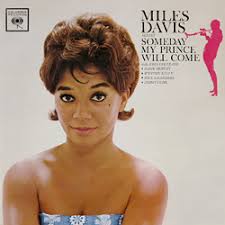 The first thing I queued up on my music server wasn’t something I actually planned to use for my BACCH first impressions, but it turned out to be one of the most surprising: Miles Davis’ “Someday My Prince Will Come.” This 1961 monster recording never could escape the era it was recorded in. The assembled iconic musicians on this session are arguably the best jazz quintet ever assembled. My personal favorite is tenor saxophonist John Coltrane, who was summoned back after officially leaving the group to form his own famous quartet. For jazz connoisseurs like me, this makes Someday My Prince Will Come an epic final recording between two jazz titans. Having heard this for over 35 years, sonically speaking, I already knew what to expect. Yet, everything was somehow different.
The first thing I queued up on my music server wasn’t something I actually planned to use for my BACCH first impressions, but it turned out to be one of the most surprising: Miles Davis’ “Someday My Prince Will Come.” This 1961 monster recording never could escape the era it was recorded in. The assembled iconic musicians on this session are arguably the best jazz quintet ever assembled. My personal favorite is tenor saxophonist John Coltrane, who was summoned back after officially leaving the group to form his own famous quartet. For jazz connoisseurs like me, this makes Someday My Prince Will Come an epic final recording between two jazz titans. Having heard this for over 35 years, sonically speaking, I already knew what to expect. Yet, everything was somehow different.
Although Miles remained centered and fixed, his instrument had gained a new sense of depth and texture. Paul Chamber’s bass had an added weight that sounded far more authentic. Ditto Jimmy Cobb on the drums. His snare and cymbals had the most natural, organic 3-D sound, giving this recording a new sense of reverberation and PRaT. More surprisingly, the enhanced reverberation had enveloped my listening space, as if I were in the recording studio. More impressive, the added reverb sounded neither processed nor gimmicky; it sounded like missing information that was always in the mix. In fact, I never heard this recording sound so unrestricted, free from colorations or distortions, and with such an enveloping sense of width and three-dimensional realism. Of course, this came as a complete surprise because I did not expect to hear such a level of improvement from an old commercial recording. But it didn’t stop there. No matter the genre or recording date, the BACCH 4Mac continued to impress, allowing my densely populated music catalog to reemerge in a way I never could have imagined. Gil Evan’s “Out of the Cool,” Duke Ellington’s “Black, Brown and Beige,” Quincy Jones’s “Walking in Space,” Shirley Horn’s “Here’s to Life,” all proved startlingly more realistic in terms of instruments appearing out of nowhere and filling my room with the most vibrant and likelike reproduction I had ever experienced in my listening room.
 Marvin Gaye’s “What’s Going On” is perhaps my all-time favorite album for numerous reasons. The opening track, “What’s Going On,” written in 1971 during the Vietnam War, proved to be a poignant social commentary on the turbulent 1960s. There’s a lot to hear on the opening track as you can hear Gaye in what sounds like a party atmosphere, beginning with “Hey, what’s happening, what up brother? This is a groovy party. What’s your name? Dennis.” A haunting sax solo opens up this melodic classic, followed closely by James Jamerson’s funky bass riffs. Gaye’s lyrics ride atop a beautiful and rhythmic melody, “Mother, mother, mother, there’s too many of you crying.” I’ve been a student of this album since I was ten years old. Yet, this song was never presented with this much spatial coherence or see-through-ness comprehension. Suddenly, one of the most excellent pop recordings of all time was being heard with a level of harmonic clarity and human conviction that I was physically exhausted when it finished.
Marvin Gaye’s “What’s Going On” is perhaps my all-time favorite album for numerous reasons. The opening track, “What’s Going On,” written in 1971 during the Vietnam War, proved to be a poignant social commentary on the turbulent 1960s. There’s a lot to hear on the opening track as you can hear Gaye in what sounds like a party atmosphere, beginning with “Hey, what’s happening, what up brother? This is a groovy party. What’s your name? Dennis.” A haunting sax solo opens up this melodic classic, followed closely by James Jamerson’s funky bass riffs. Gaye’s lyrics ride atop a beautiful and rhythmic melody, “Mother, mother, mother, there’s too many of you crying.” I’ve been a student of this album since I was ten years old. Yet, this song was never presented with this much spatial coherence or see-through-ness comprehension. Suddenly, one of the most excellent pop recordings of all time was being heard with a level of harmonic clarity and human conviction that I was physically exhausted when it finished.
My larger-than-life Sunny Majestic horn loudspeakers were always too big for my listening space. Getting these 1,000-lb monsters to disappear proved to be a significant challenge. The goal was to make them act as though they weren’t in the room. They are about 10 feet apart and 10 feet from my listening seat. With the addition of the BACCH 4Mac, they’ve provided the greatest disappearing act I’ve seen, and now behave like pint-sized monitors with a lion’s roar. I liken the BACCH 4Mac to a lion tamer for these behemoths because (finally), the images are better defined, appropriately right-sized (smaller), and more three-dimensionally placed well outside the Sunny’s physical location, both vertically and horizontally. On a few occasions, I’ve detected instruments and voices right next to me. I’m not going to say I enjoy hearing something that close, but I do admit it makes me smile whenever it happens (however rare). I’ve read that the BACCH is even more impressive on live recordings than in the studio. I agree with that assessment, given the ambient sounds from the audience and the space on live tracks. However, I stand here more than a year later, more astounded with each song I play, at how the BACCH 4Mac has enabled an entirely new listening experience for both old and new recordings, whether live or studio.
The most important title in Theorectica Applied Physics BACCH is the word PURIFIER. Of all its outstanding sonic virtues — there are plenty — what I hear and appreciate the most from the BACCH 4Mac is its remarkably high purity quotient. My brain doesn’t have to work as hard to figure out what’s going on, thanks to its sophisticated crosstalk and comb filtering cancellation software. Additionally, the room correction software is state-of-the-art due to its advanced in-ear headphone measurement technology. These combined technologies offer much greater sonic fidelity than any cable, AC conditioner, or component I am aware of or have experienced. The Theoretica Applied Physics BACCH 4Mac allows my music to sound freer, devoid of the typical 2-channel-specific space. Over and over, I’ve A/B’d ad nauseam, and in each case, the soundstage collapsed within itself into a two-dimensional and more complicated and less musical plane. To such a degree that I find it impossible to return. I admit, dear reader, I have happily dived down the rabbit hole of Theorectica Applied Physics BACCH.

Another thing, before I forget. The above photo is of the software that comes with the BACCH 4Mac. Yes, it looks very intimidating, but in truth, there’s nothing to learn or master here. It is simply an illustration of what is happening behind the scenes and what makes the technology function. If you’re like me and only want great sound, then avoid touching anything that could potentially ruin the sound. Maybe Professor Edgar Choueiri has all this software here to keep himself amused. After all, he’s an astrophysicist, and maybe that screen explains things to him that mere mortals like me will never understand. Nonetheless, I have been operating it like a pro (maybe because it’s dummy-proof).
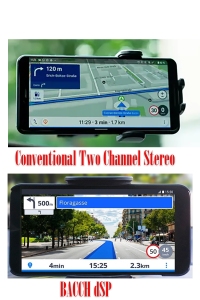
I feel almost helpless in my ability to fully describe what the BACCH technology sounds like in my system. I simply cannot summon the words. However, the above photo best demonstrates what my mind’s eye sees when listening through and into the music. The system has shifted from mapping out instruments with a lessened, more homogenized view into one that is now more three-dimensionally realistic. The BACCH 4Mac features a kaleidoscope of images, with an enhanced sense of clarity that allows for a more holographic landscape of sound and color.
I’ve concluded that Professor Edgar Choueiri has optimized the BACCH 4Mac in a very neatly designed package that needs to be heard to be believed. I am now a believer. So much, in fact, that I decided to upgrade to the full-chassis’d $32k BACCH-SP adio. I will report on this unit as soon as possible.


Specifications:
Theorectica Applied Physics BACCH 4Mac Pro
Price: $6950.00 plus optional ORC ($1000.00) and Mac Mini ($1038).
Website: www.theoretica.us/bacch4mac/
Stereo Times Masthead
Publisher/Founder
Clement Perry
Editor
Dave Thomas
Senior Editors
Frank Alles, Mike Girardi, Russell Lichter, Terry London, Moreno Mitchell, Paul Szabady, Bill Wells, Mike Wright, and Stephen Yan,
Current Contributors
David Abramson, Tim Barrall, Dave Allison, Ron Cook, Lewis Dardick, John Hoffman, Dan Secula, Don Shaulis, Greg Simmons, Eric Teh, Greg Voth, Richard Willie, Ed Van Winkle, Rob Dockery, Richard Doron, and Daveed Turek
Site Management Clement Perry
Ad Designer: Martin Perry



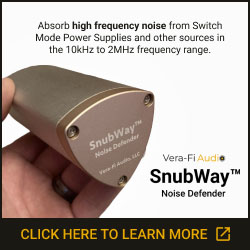

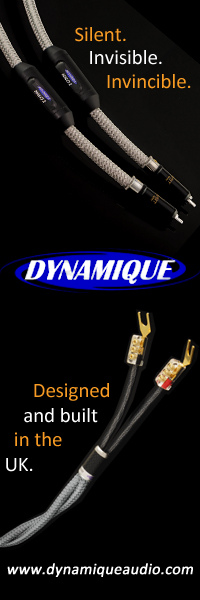
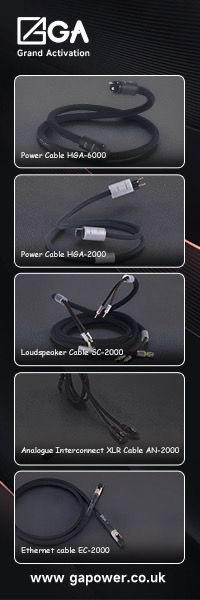
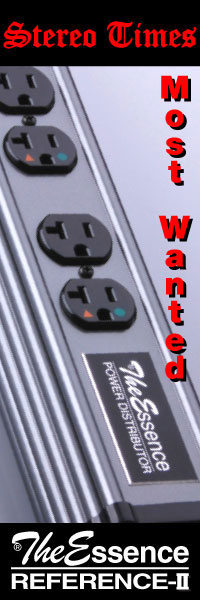
Be the first to comment on: The Theorectica BACCH 4Mac Pro